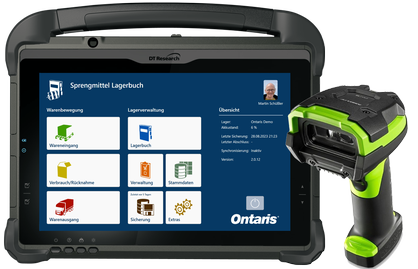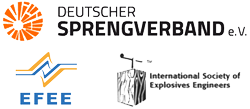Track & Trace of Explosives
In Accordance with EU Directive 2008/43/EC
The adoption of EU Directive 2008/43/EC on the track and trace of explosives stipulates that all explosives used commercially must be fully traceable in electronic form, from the manufacturer to use or consumption. This EU directive on the track and trace of explosives will be mandatory for all companies that handle explosives from April 5, 2015.
Under the EU directive, manufacturers of explosives are obliged to clearly label all explosives using a barcode. This marking makes it possible to trace the respective explosive without any gaps.
The requirements for an EDP-based explosives stock book can be summarized as follows:
- Recording of barcodes for unique identification of the explosives
- Management of article master data, supplier master data, usage master data and recipient master data
- Retrieve and display the current stock level
- Target/actual comparison possible at any time
- Proof of use of the individual explosives must be possible at all times
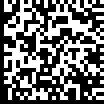
- No subsequent changes to the stock ledger possible
- 365/24 Obligation to provide evidence
- 10-year archiving and verification obligation
Explosives User
The EU Labelling Directive will come into force for the use of explosives from April 2015. From this date, end users are also obliged to provide complete information on the use and whereabouts of the explosives.
Labeling obligation for users
To implement the EU Directive, the user must record each individual article with its unique identification code. This includes the input and consumption data. For very small quantities, this can also be done by hand, but the use of an electronic database is recommended. Only with this data can the use and whereabouts of each individual item (e.g. detonator) be verified later. If the user uses an electronic database, he can scan the data matrix code that the manufacturer has affixed to the articles and packaging and enter it directly into the database. It is important to note that the data matrix code on the boxes or crates only provides information about the type and quantity of the contents and does not include the unique identification codes of the items contained. However, these are necessary for the traceability of the individual articles.
 To avoid having to completely unpack all boxes and scan all items individually when goods are received, manufacturers have agreed on a standardized digital delivery bill (often called an “XML file from the supplier”). This XML file contains all individual items of the delivery incl. The clear labeling also includes information on which individual item is in which carton or crate. By importing the XML file into the database, there is no need to scan each individual item. This also makes removal much easier later on, as complete boxes can then be removed without having to unpack them and scan the contents individually.
To avoid having to completely unpack all boxes and scan all items individually when goods are received, manufacturers have agreed on a standardized digital delivery bill (often called an “XML file from the supplier”). This XML file contains all individual items of the delivery incl. The clear labeling also includes information on which individual item is in which carton or crate. By importing the XML file into the database, there is no need to scan each individual item. This also makes removal much easier later on, as complete boxes can then be removed without having to unpack them and scan the contents individually.
Supplier XML file
As the EU directive requires an electronic stock ledger to show the individual items, it is necessary for this XML file to be available at the latest when the goods are delivered. Otherwise, every single item in the delivery would have to be scanned by hand, as otherwise the requirements of the EU Labeling Directive would not be met and the stock ledger would show a stock shortage.
As the entire system is based on the individual identification codes, it is important that an incoming inspection of the delivery is carried out via random sampling. It is sufficient to scan individual boxes or crates with the scanner. Based on the data that the system has received via the XML file, it can be determined immediately on site whether the wrong box with the wrong labeling codes was delivered by mistake.
Explosives Dealer
Explosives dealers form the link between explosives manufacturers and explosives users. Furthermore, explosives dealers are often also active as service providers, carrying out blasting services for some of their customers.
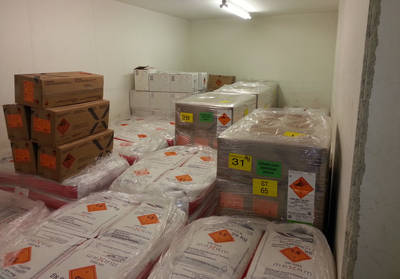 As explosives dealers, they are subject to similar legal requirements as manufacturers. You can contact BAM
As explosives dealers, they are subject to similar legal requirements as manufacturers. You can contact BAM
(Federal Institute for Materials Research and Testing) in order to form new packaging units or create new products. However, it is important to note that a new label may not be added to an article that already has a unique label. The clear labeling may not be changed from production to destruction.
Detonator bearing
On the other hand, it is common to put together customized detonator bundles. The required detonators are then put together individually especially for individual blasts and provided with a new Datamatix code. The same often happens in the powder trade, where different types of powder are combined in new packaging and provided with a data matrix code.
The explosives trader, like the explosives manufacturer, should deliver his goods with a supplier XML file. This is not a legal requirement, but a voluntary service provided by explosives manufacturers and dealers. Without this supplier XML file, however, the entire tracking process can only be accomplished with disproportionate effort.
Explosives Manufacturer
The labeling directive has been binding for manufacturers of explosives since April 5, 2013. This means that all explosives used commercially must bear a clear, electronically readable label. This label contains the following information, among others:
- The name of the manufacturer,
- the country of manufacture,
- the place of manufacture,
- a unique product code.
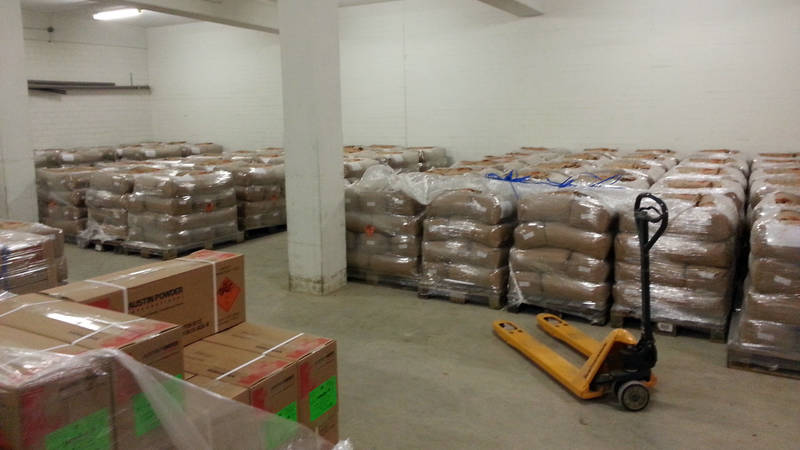
A Data Matrix code is now used uniformly by all manufacturers. Quite a lot of information can be stored in the code and it offers a certain error tolerance if part of the label is no longer legible.
This Data Matrix code can be read with suitable 2D hand-held scanners and the information can be processed by track and trace software. In addition to the information mentioned above, each manufacturer can store further information in the data matrix code.
The EU directive stipulates that each article must bear a clear and unmistakable label. This means that each individual cartridge and each individual detonator must be given a unique identification code.
In order to be able to check whether parts have been removed from a packaging unit, the packaging units must also be labeled in such a way that the contents can be identified. This means that the content of the data matrix code, which is attached to a box for example, shows how many detonators and which ones are in the box. However, the data matrix code does not provide any information about the unique identification codes of the detonators contained.


